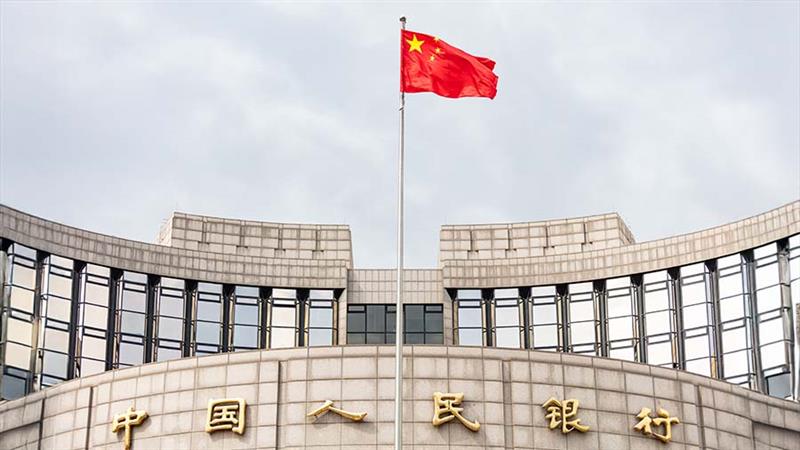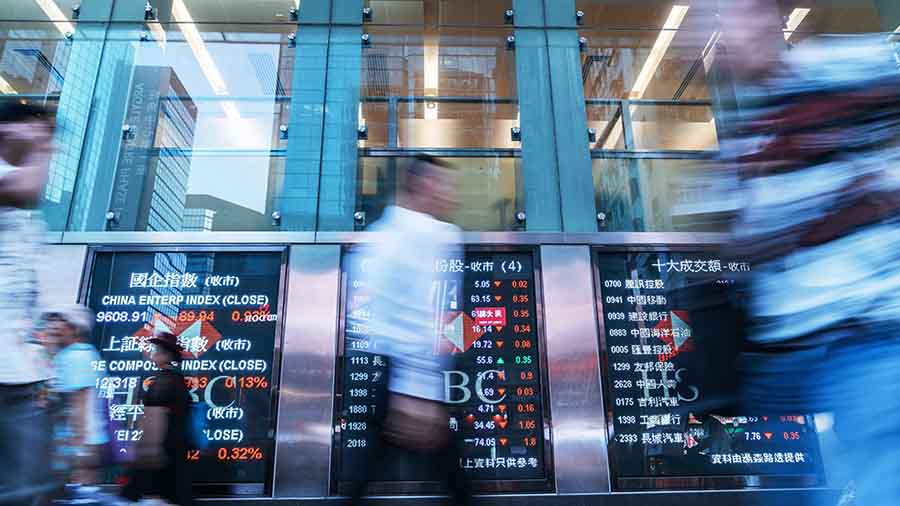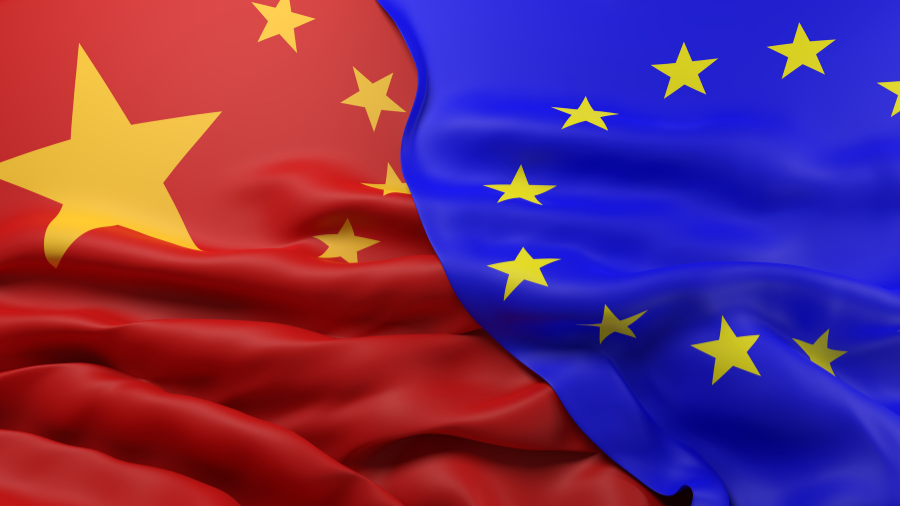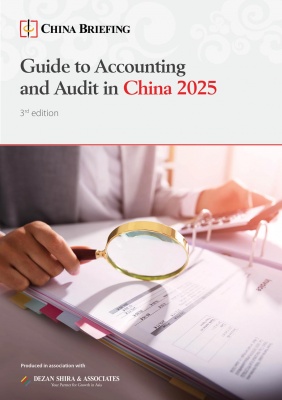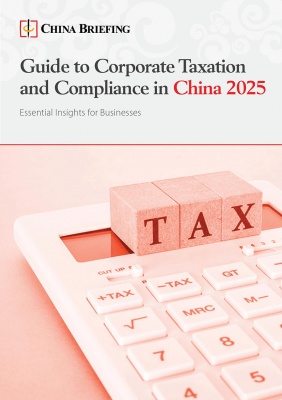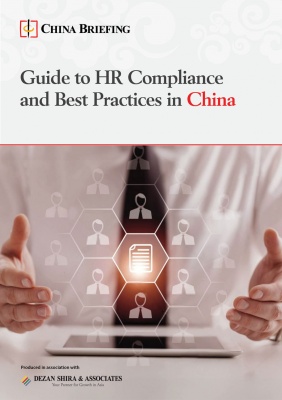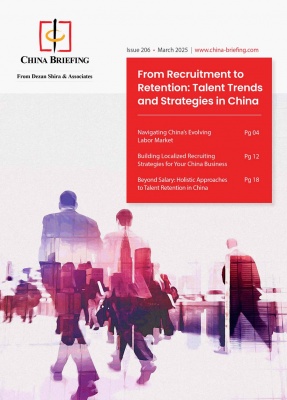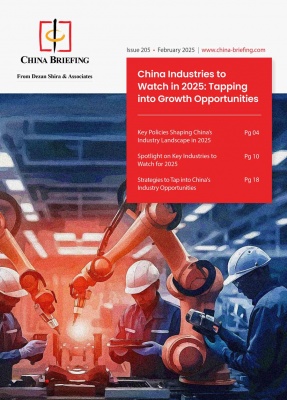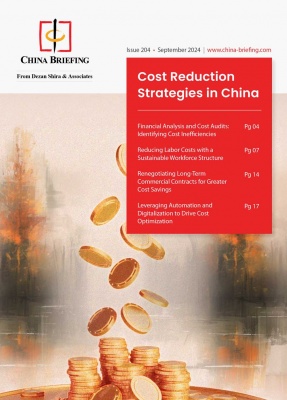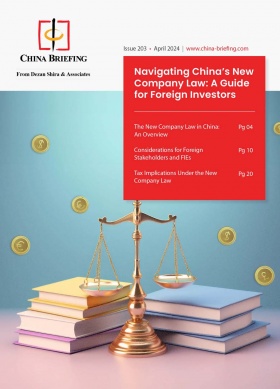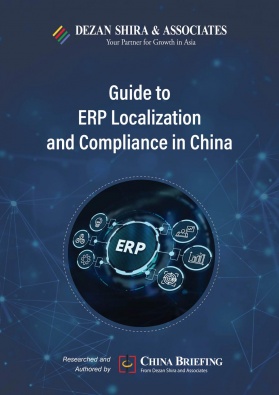China-ASEAN Trade and Investment Relations
ASEAN is a critical trade and investment partner for China due to its extensive geographic coverage, abundance of strategically important trade routes, large population, and rapidly expanding economy. In recent years, trade and investment between China and the 10 ASEAN member countries (Singapore, Indonesia, Malaysia, Thailand, Vietnam, Cambodia, Laos, Myanmar, Brunei, and The Philippines) have grown significantly, reflecting the deepening economic ties between the two regions. This growth has been bolstered by the signing of various trade and investment agreements, which have expanded cooperation and reduced trade barriers.
The partnership presents numerous opportunities for businesses in the region, enabling them to benefit from improved market access, increased competitiveness, and enhanced economic collaboration.
China-ASEAN trade
As a bloc, ASEAN is China’s largest trading partner, overtaking the EU in 2020. In 2023, trade with ASEAN countries accounted for 15.9 percent of China’s total foreign trade, with total bilateral trade reaching RMB 3.36 trillion (US$468.8 billion), an increase of 10.5 percent from the previous year. China continues to hold a trade surplus with ASEAN; in 2023, China exported RMB 2.03 trillion (US$283.2 billion) in goods to the 10 countries, up 14.2 percent year-on-year, and imported RMB 1.33 trillion (US$185.6 billion), up 5.2 percent year-on-year.
China’s largest trading partner within the bloc is Vietnam. In 2023, total trade between Vietnam and China reached RMB 1.6 trillion (US$223.2 billion). Of this, exports from China to Vietnam reached a total of RMB 968.4 billion (US$135.1 billion), while imports reached RMB 650.2 billion, leading to a trade surplus of RMB 318.2 billion (US$44.4 billion).
Six countries – Vietnam, Malaysia, Indonesia, Thailand, Singapore, and The Philippines – account for the vast majority of China’s trade with ASEAN. In 2023, the remaining four countries – Laos, Cambodia, Myanmar, and Brunei – accounted for just 5 percent of ASEAN’s trade with China.
Since 2022, Indonesia has taken over Thailand as the third biggest trading partner within the bloc – in 2023 accounting for 16.1 percent of ASEAN’s total trade with China to Thailand’s 14.6 percent.
According to the GAC, ASEAN is China’s largest trading partner for intermediate goods, with bilateral trade in intermediate goods amounting to US$4.13 trillion (US$576.2 billion) in 2023.
China and ASEAN have also deepened cooperation in industries such as green energy and consumer electronics, and China’s exports of lithium batteries and solar cells to ASEAN and imports of audio and video equipment parts have grown rapidly.
According to data from ICT Trade Map, China’s major exports to ASEAN countries in 2023 included electrical machinery and equipment, valued at US$128.66 billion, and nuclear reactors, boilers, machinery, and mechanical appliances at US$64.94 billion. Mineral fuels and mineral oils followed with US$20.05 billion, while exports of plastics and plastic articles were worth US$18.50 billion.
| China’s Top Exports to ASEAN, 2023 | |
| Product | Value (US$ billion) |
| Electrical machinery and equipment and parts thereof; sound recorders and reproducers, televisions; etc. | 128.66 |
| Nuclear reactors, boilers, machinery, and mechanical appliances; parts thereof | 64.94 |
| Mineral fuels, mineral oils, and products of their distillation; bituminous substances; etc. | 20.05 |
| Plastics and articles thereof | 18.50 |
| Iron and steel | 18.01 |
| Organic chemicals | 14.13 |
| Articles of iron or steel | 13.94 |
| Vehicles other than railway or tramway rolling stock, and parts and accessories thereof | 13.06 |
| Miscellaneous chemical products | 10.01 |
| Source: ICT Trade Map | |
Meanwhile, ASEAN remains an important source of imports of agricultural and energy products for China. Almost all of China’s palm oil imports come from Indonesia and Malaysia. According to ICT Trade Map, Chinese imports of animal, vegetable, or microbial fats and oils amounted to US$8.12 billion.
Countries such as Indonesia and Myanmar are also among China’s largest sources of coal and tin ore. China’s imports of mineral fuels, oils, and products of their distillation amounted to US$72.44 billion in 2023, per ICT Trade Map data.
| China’s Top Imports from ASEAN, 2023 | |
| Product | Value (US$ billion) |
| Electrical machinery and equipment and parts thereof; sound recorders and reproducers, televisions; etc. | 117.15 |
| Mineral fuels, mineral oils, and products of their distillation; bituminous substances; minerals; etc. | 72.44 |
| Nuclear reactors, boilers, machinery, and mechanical appliances; parts thereof | 32.33 |
| Iron and steel | 18.66 |
| Edible fruit and nuts; peel of citrus fruit or melons | 11.54 |
| Rubber and articles thereof | 9.49 |
| Plastics and articles thereof | 9.17 |
| Ores, slag, and ash | 8.30 |
| Optical, photographic, cinematographic, measuring, checking, precision, medical or surgical instruments or apparatus, parts thereof | 8.17 |
| Animal, vegetable, or microbial fats and oils and their cleavage products; prepared edible fats; etc. | 8.12 |
| Source: ICT Trade Map | |
China-ASEAN bilateral investment
Foreign investment between China and ASEAN countries has risen steadily over the past few decades. Chinese investment in ASEAN in particular has accelerated over the last decade, growing at a CAGR of 9.88 percent from 2013 to 2022. Growth in ASEAN countries’ investment in China has been more modest by comparison and is driven largely by Singapore, whose FDI flows to China grew at a CAGR of 10.4 percent over this same period.
According to data from China’s Ministry of Commerce (MOFCOM), as of July 2023, the accumulated two-way investment between China and ASEAN countries has surpassed US$380 billion.
Chinese FDI in ASEAN
According to MOFCOM’s 2022 Statistical Bulletin of China’s Outward Foreign Direct Investment, China’s direct investment in ASEAN countries in 2022 amounted to US$18.65 billion, a 5.5 percent decline from the previous year. This investment constituted 11.4 percent of China’s total foreign investment flow and 15 percent of its FDI flows to Asia. By the end of 2022, the cumulative stock of Chinese FDI in ASEAN reached US$154.66 billion, accounting for 5.6 percent of China’s global FDI stock and 8.4 percent of its FDI stock in Asia. China has established over 6,500 direct investment enterprises in ASEAN as of July 2023, employing more than 660,000 foreign workers.
Singapore was the largest recipient of Chinese investment in ASEAN in 2022, attracting US$8.3 billion, a slight decrease of 1.3 percent from the previous year. The investments were primarily directed towards wholesale and retail, manufacturing, finance, and other sectors. Indonesia followed with US$4.55 billion, a 4 percent increase, mainly in manufacturing, mining, and the production and supply of electricity, thermal energy, gas, and water. Vietnam was the third-largest recipient, with US$1.7 billion in investments, focusing on manufacturing, wholesale, and retail.
Singapore also holds the highest cumulative stock of Chinese investment at US$73.45 billion as of the end of 2022, mainly directed at leasing and business services, wholesale and retail, manufacturing, and financial services. Indonesia followed with US$24.72 billion, focusing on manufacturing, electricity, thermal energy, gas, and water production and supply, and mining. Malaysia was third with US$12.05 billion, targeting manufacturing, electricity, thermal energy, gas, and water production and supply, construction, and wholesale and retail.
| Chinese FDI in ASEAN Countries, 2022 | ||
| Country | FDI stocks (US$ billion) | Proportion of total (%) |
| Singapore | 73.45 | 2.7 |
| Indonesia | 24.72 | 0.9 |
| Malaysia | 12.05 | 0.4 |
| Vietnam | 11.66 | 0.4 |
| Thailand | 10.57 | 0.4 |
| The Philippines | 3.42 | 0.1 |
| Brunei | 2.83 | 0.1 |
| Cambodia | 0.38 | 0 |
| Laos | 0.06 | 0 |
| Myanmar | 0.13 | 0 |
| Source: 2022 Statistical Bulletin of China’s Outward Foreign Direct Investment, MOFCOM | ||
Manufacturing was the primary sector for Chinese investment in ASEAN, receiving US$8.21 billion in 2022. Major destinations for these investments were Indonesia, Vietnam, Singapore, and Malaysia. The wholesale and retail sector saw US$4.2 billion in investments, marking a 32.4 percent increase from the previous year, with a significant portion directed towards Singapore. The mining sector received US$1.81 billion, skyrocketing 235.5 percent year-on-year, with investments mainly flowing into Singapore and Indonesia.
Investments in the production and supply of electricity, thermal energy, gas, and water amounted to US$1.58 billion, an 8.6 percent increase, with significant investments in Indonesia, Malaysia, and Singapore. The financial sector attracted US$940 million, up 44 percent, primarily directed towards Singapore. Other sectors such as leasing and business services, information transmission, software and IT services, education, and resident services also saw varying levels of investment.
|
Top ASEAN Industries for Chinese FDI, 2022 |
||||
| Industry | New companies established | Proportion (%) | Actual capital investment (US$) | Proportion (%) |
| Manufacturing | 8.21 | 44 | 49.28 | 31.9 |
| Wholesale and retail | 4.2 | 22.5 | 24.77 | 16 |
| Leasing and business services | 6.01 | 3.2 | 22.48 | 14.5 |
| Mining | 1.81 | 9.7 | 57.33 | 3.7 |
| Electricity, heating, gas, and water production/supply | 1.58 | 8.5 | 9.51 | 6.1 |
| Finance | 0.94 | 5 | 8.08 | 5.2 |
| Source: 2023 China Foreign Investment Statistical Bulletin, MOFCOM | ||||
In terms of cumulative stock by industry, manufacturing led with US$49.28 billion, distributed mainly across Indonesia, Singapore, Vietnam, Thailand, and Malaysia. Wholesale and retail followed with US$24.77 billion, primarily in Singapore, Malaysia, and Thailand, while leasing and business services saw US$22.49 billion, mostly in Singapore, Indonesia, and Laos.
Construction, financial services, transportation, warehousing, postal services, mining, agriculture, forestry, animal husbandry, and fisheries also attracted significant investments.
ASEAN FDI in China
In 2022, ASEAN countries’ FDI flows into China reached a total of US$11.91 billion, accounting for around 6.3 percent of China’s actual use of foreign capital. The vast majority – 89 percent – came from Singapore, which invested US$10.6 billion in China that year. Singapore also accounted for almost 85 percent of the accumulated FDI flows from ASEAN to China as of the end of 2022, and around 4.7 percent of China’s total accumulated FDI from the whole world.
The second largest source of FDI – Malaysia – accounted for a further 9 percent of the total in 2022 and 5.9 percent of the accumulated total.
| ASEAN FDI Flows to China, 2022 | ||||
| Country | FDI flows (US$ billion) | Proportion of total (world) (%) | Accumulated FDI (US$ billion) | Proportion of total (world) (%) |
| Singapore | 10.6 | 5.6 | 131.44 | 4.7 |
| Indonesia | 00.4 | 0 | 2.7 | 0.1 |
| Malaysia | 1.13 | 0.6 | 9.12 | 0.3 |
| Vietnam | 00.1 | 0 | 0.3 | 0 |
| Thailand | 0.07 | 0 | 4.66 | 0.2 |
| The Philippines | 0.01 | 0 | 3.42 | 0.1 |
| Brunei | 0 | 0 | 2.83 | 0.1 |
| Cambodia | 0.05 | 0 | 0.38 | 0 |
| Laos | 0 | 0 | 0.06 | 0 |
| Myanmar | 0 | 0 | 0.13 | 0 |
| Source: China Foreign Investment Statistical Bulletin 2023, MOFCOM | ||||
In 2022, ASEAN countries established a total of 1,833 new FIEs in China, accounting for 4.8 percent of the year’s total.
The industry that attracted the most investment in 2022 was manufacturing, which took in US$4.55 billion, around 38.2 percent of total FDI inflows from ASEAN that year. This was followed by wholesale and retail, which attracted US$1.84 billion. However, wholesale and retail accounted for 26.7 percent of the total number of new ASEAN companies established in China in 2022, while leasing and business services accounted for 22.5 percent.
|
Top Chinese Industries for ASEAN FDI, 2022 |
||||
| Industry | New companies established | Proportion (%) | Actual capital investment (US$) | Proportion (%) |
| Manufacturing | 135 | 7.4 | 4.55 | 38.2 |
| Wholesale and retail | 489 | 26.7 | 1.84 | 15.4 |
| Leasing and business services | 413 | 22.5 | 1.29 | 1.09 |
| Transport, warehousing, and postal services | 48 | 2.6 | 0.97 | 0.82 |
| Real estate | 13 | 0.7 | 0.89 | 0.75 |
| Source: 2023 China Foreign Investment Statistical Bulletin, MOFCOM | ||||
China-ASEAN trade and investment agreements
China-ASEAN Free Trade Area
The ASEAN-China Free Trade Area (ACFTA) was first established with the signing of the Framework Agreement on China-ASEAN Comprehensive Economic Cooperation at the sixth China-ASEAN Summit in November 2002. This initial agreement laid the foundation for closer economic and trade relations between China and ASEAN countries and was followed by the signing of the Agreement on Trade in Goods in November 2004, which took effect in July 2005. Subsequently, the Agreement on Trade in Services was signed in January 2007 and became effective in July of that year, and the Agreement on Investment was signed in August 2009.
The ACFTA has significantly impacted China-ASEAN trade, particularly with the full effect of the Protocol on Revising the China-ASEAN Comprehensive Economic Cooperation Framework Agreement in October 2019, which allowed over 90 percent of goods (approximately 7,000 types) to benefit from zero tariffs. This has greatly enhanced trade and investment liberalization and facilitation between the two parties, fostering stronger economic ties and contributing to regional economic development.
Negotiations for further amendments and upgrades to the ACFTA have been ongoing, with the ACFTA 3.0 version aiming to create a more inclusive, modern, comprehensive, and mutually beneficial FTA. These negotiations, launched at the 25th ASEAN-China Summit in 2022, have involved various working groups and the ACFTA Special Joint Committee. The third round of negotiations took place from June 24 to 27, 2023, in Kunming, China, with a focus on enhancing cooperation in emerging fields such as the digital economy, green economy, and supply chain connectivity. Both parties are committed to completing the negotiations within 2024. As of May 2024, six rounds of negotiations have been held.
RCEP
China and the 10 ASEAN countries are members of the Regional Comprehensive Economic Partnership (RCEP), the world’s largest free trade agreement (FTA). Australia, Japan, New Zealand, and the Republic of Korea are also members.
The RCEP aims to simplify and unify trade rules among member countries to reduce trade barriers and create a more seamless trading environment. The agreement covers a broad range of areas, including trade in goods and services, investment, intellectual property, e-commerce, small and medium-sized enterprises (SMEs), economic and technical cooperation, and government procurement.
One of the major commitments of the RCEP is the gradual elimination of about 92 percent of tariffs for traded goods over the 20 years following the agreement taking effect. This is particularly beneficial for export-oriented economies, such as China, Vietnam, and Singapore, as it will enable preferential market access for goods from member countries, increasing their competitiveness in regional markets.
China-Singapore Free Trade Agreement
In addition to the multilateral trade agreements, China also has a unilateral FTA with Singapore, the China-Singapore Free Trade Agreement (CSFTA). Signed on October 23, 2008, the FTA built upon the existing CAFTA by accelerating the liberalization of trade in goods and further liberalizing trade in services. The CSFTA has facilitated the elimination of tariffs on 95 percent of Singapore’s exports to China, allowed for third-party invoicing of goods, safeguarded market access, and provided a more predictable operating environment for service suppliers.
On November 12, 2018, a protocol was signed to upgrade the CSFTA, reinforcing its provisions and expanding its scope. This protocol enhanced the agreement’s effectiveness by introducing new measures and commitments to further ease trade and investment flows between China and Singapore.
A further protocol was signed in December 2023, which included commitments to services and investment openness using negative lists to create broader opportunities for investors and service providers. It also expanded cooperation in emerging fields such as the digital economy.
China-Cambodia Free Trade Agreement
The China-Cambodia Free Trade Agreement (CCFTA), signed on October 12, 2020, and effective from January 1, 2022, aims to boost trade by reducing tariffs and non-tariff barriers across multiple sectors, including trade, tourism, investment, transportation, and agriculture. China will grant duty-free status to approximately 98 percent of imports from Cambodia, while Cambodia will reciprocate with up to 90 percent of its imports from China.
Though many Cambodian exports to China were already tariff-free under the ACFTA, the CCFTA extends this benefit to over 340 additional products, such as seafood, garlic, cashew nuts, and dried chili.
The CCFTA is expected to boost bilateral trade, with two-way trade reaching US$12.26 billion in 2023, according to the Cambodia Ministry of Commerce. According to Hoe Ee Khor, chief economist of the ASEAN, it has already led to a surge in exports of Cambodian goods like vehicle parts and wood products to China, as well as increased imports of Chinese consumer goods and manufacturing materials, contributing to Cambodia’s economic diversification and growth. The agreement, alongside the RCEP, is anticipated to drive Cambodia’s economic growth, projected at 5.6 percent in 2024.
About Us
China Briefing is one of five regional Asia Briefing publications, supported by Dezan Shira & Associates. For a complimentary subscription to China Briefing’s content products, please click here.
Dezan Shira & Associates assists foreign investors into China and has done so since 1992 through offices in Beijing, Tianjin, Dalian, Qingdao, Shanghai, Hangzhou, Ningbo, Suzhou, Guangzhou, Haikou, Zhongshan, Shenzhen, and Hong Kong. We also have offices in Vietnam, Indonesia, Singapore, United States, Germany, Italy, India, and Dubai (UAE) and partner firms assisting foreign investors in The Philippines, Malaysia, Thailand, Bangladesh, and Australia. For assistance in China, please contact the firm at china@dezshira.com or visit our website at www.dezshira.com.
- Previous Article China’s Economic and Sports Industry Gains from Paris 2024 Olympics
- Next Article China’s Six-Year Rule for Foreigners: 2024 IIT Payment Highlights

